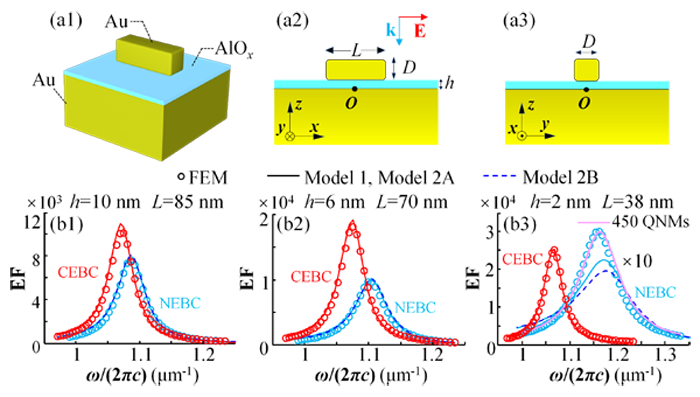NKU Scholar Proposed an Electromagnetic Theory for Realizing the Analytical Treatment of Non-classical Quantum Effect in Metal Nanoresonators
Recently, the research group headed by Professor Liu Haitao of the Institute of Modern Optics, College of Electronic Information and Optical Engineering, Nankai University, proposed an electromagnetic theory to realize the analytical treatment of non-classical electromagnetic boundary conditions for mesoscale plasmon resonant cavity. The results were published on Physical Review Letters entitled "Quasinormal Mode Expansion Theory for Mesoscale Plasmonic Nanoresonators: An Analytical Treatment of Nonclassical Electromagnetic Boundary Condition".
Liu Haitao's research group realized the analytical treatment of non-classical electromagnetic boundary conditions by establishing a quasinormal mode of mesoscale plasmon resonator under non-classical electromagnetic boundary conditions. According to this theory, the quasinormal mode is the resonant mode supported by the metal nanoresonators, which dominates the electromagnetic response of the system. As shown in the Figure, the electromagnetic response of mesoscale metal nanoresonators can be accurately predicted using this theory. Since this theory relies on non-classical electromagnetic boundary conditions in terms of analysis, the effect of non-classical effects on the resonance characteristics of the system is clearly revealed. Furthermore, because the theory's dependence on non-classical electromagnetic boundary conditions, excitation frequency and excitation sources is highly analytical, the theory can significantly reduce the calculating amount compared with full-wave numerical algorithms and can be used for large-scale calculation, such as the optimal design of nanophotonic devices and the photodynamic calculation of metal nanoparticles.

Figures: (a) Schematic diagram of the structure of a single metal nanowire antenna on a calculated gold base. (b) Spectral curve of the electric field enhancement factors in the nanogap between antenna and base under plane wave excitation. (B1)-(B3) refer to three sets of antenna structural parameters respectively. The red curve is the result of ignoring non-classical effects, and the other curves are the results of taking into account non-classical effects. The circles are the results of the full-wave numerical calculation, and the solid line and dashed line are the theoretical predictions.
The NKU Institute of Modern Optics is the first unit of this paper; Tao Can, an NKU doctoral student, is the first author, and NKU professor Liu Haitao is the corresponding author.
Link to the paper: https://link.aps.org/doi/10.1103/PhysRevLett.129.197401
(Edited and translated by Nankai News Team)









